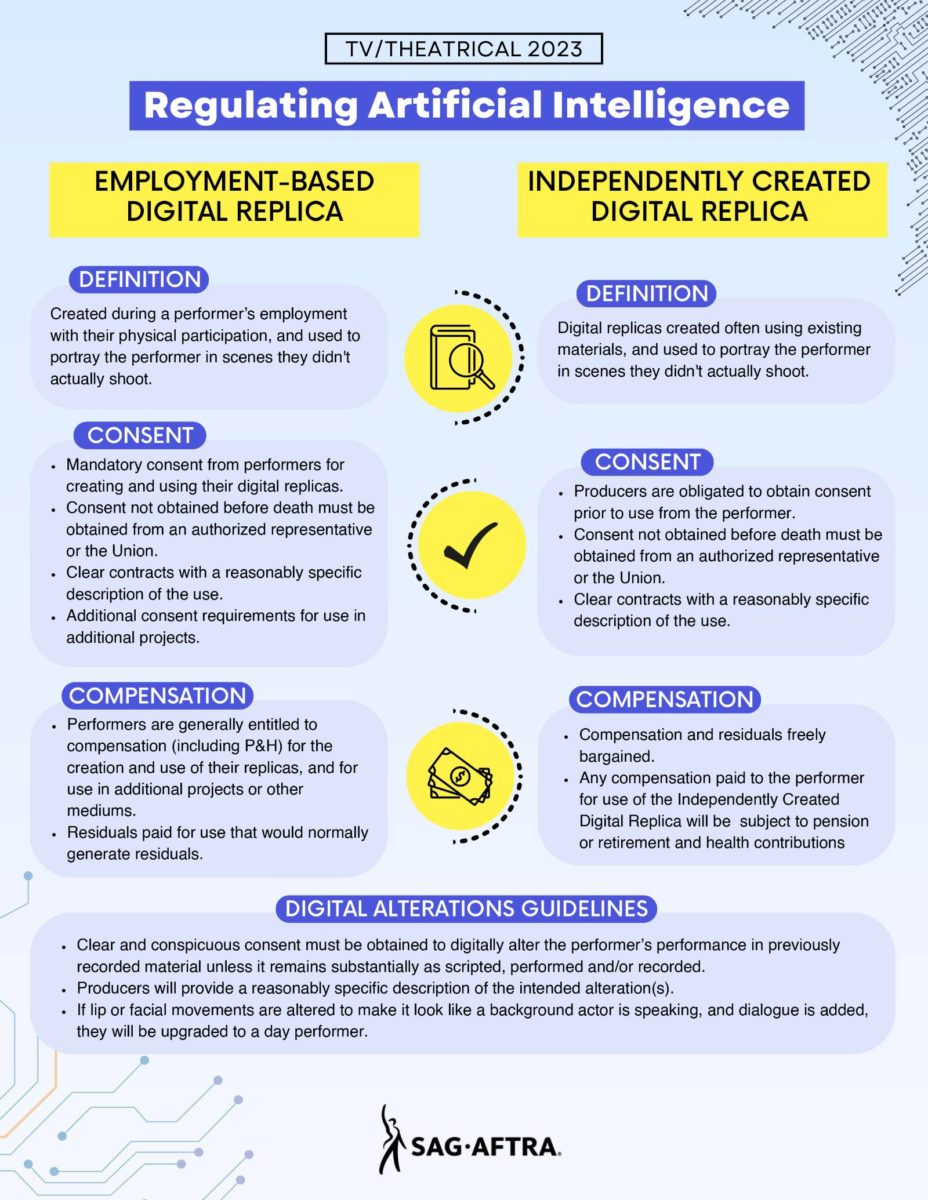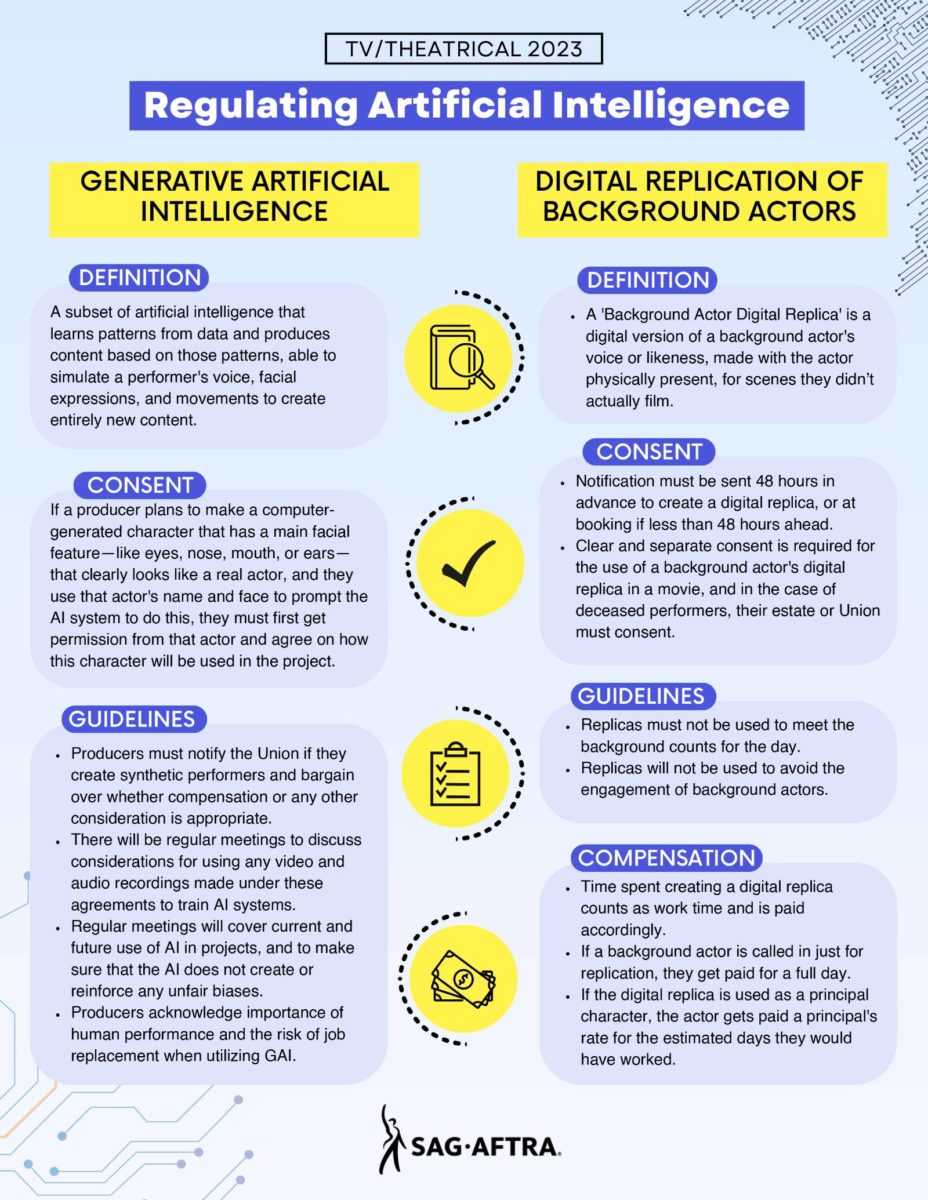After 118 days of the SAG-AFTRA strike, the AMPTP finally wised up and struck a deal for the industry to get back to work. With the 2023 TV/Theatrical Contract tentative agreement now approved by the SAG-AFTRA National Board with an 86% majority, voting will kick off tomorrow and last through December for all 160,000 SAG-AFTRA members to weigh on the agreement. As anticipated works from Clint Eastwood, Ridley Scott, and John Woo get back into production, while hopefully others from Paul Thomas Anderson, Quentin Tarantino, and Josh Safdie will receive updates soon, SAG-AFTRA has now released the 18-page tentative agreement detailing all of their wins.
Before we get to that, however, here’s a summary in their own words:
The agreement includes an unprecedented wage pattern with two wage increases in the first year of the contract – 7% upon ratification, and another 4% increase effective July 2024, making a compounded first year increase of 11.28%. There will be another 3.5% increase effective July 2025. This package breaks the so-called “industry pattern.”
Wages for background actors will increase by 11% effective November 12, 2023, and then by an additional 4% effective July 1, 2024 and by another 3.5% effective July 1, 2025. And in a monumental breakthrough, for the first time ever, the number of covered positions in the West Coast Zones will equal those of the East Coast Zones. This is projected to add almost 11,000 new covered background work days annually.
A nearly 43% increase to the contribution cap for one-hour productions and nearly 67% increase to the cap for half-hour productions will result in increased contributions to the Health and Pension/Retirement funds, as well as help performers working on those shows to continue qualifying for benefit coverage.
The union achieved the creation of a new compensation stream for performers working in streaming. It provides a substantial bonus on top of existing residuals structures making work in streaming more sustainable for middle class actors. The majority of that compensation will be paid to actors on programs meeting certain viewership requirements. The remaining money will be distributed to other actors working on those streaming platforms through a new, jointly-trusteed distribution fund. This ensures improved compensation and sustainability for a wider range of actors contributing to the success of those platforms. The agreement also adds fixed residuals for stunt coordinators working on television and new media productions.
The contract achieved important gains for hair and makeup equity, the sharing of aggregate diversity statistics, eliminating inappropriate wiggings and paintdowns, gender neutral language, access to gender-affirming care, and translation services. It also provides more sexual harassment prevention protections for performers including the use of intimacy coordinators in scenes involving nudity and simulated sex or upon request and additional safeguards for background.
Additional gains include establishing minimums by applying television terms to high budget made-for-AVOD programming.
Meaningful protections for the casting process have been established, including provisions specifying that breakdowns, sides, and/or scripts shall be provided no less than 48 hours prior to the submission deadline (excluding weekends and holidays). This is increased to 72 hours for minors. Talent may not be asked to perform more than eight (8) industry standard pages for a first self-tape or twelve (12) industry standard pages for a second or subsequent call back. Additionally, if memorization is required, performers will be entitled to compensation. And performers may not be requested to appear nude or while wearing attire more revealing than a bathing suit that could be worn at a public pool. Producers must also provide opportunities to interview virtually or in person on a first come, first served basis with accommodations for performers with disabilities, senior performers, and minors.
Substantial improvements in relocation allowances for series performers were also made, covering $5,000 per month for up to 6 months with no cap on the number of seasons. Based on employment patterns, this amounts to a 153% effective increase in relocation payments.
Together, the gains achieved in the contract are expected to generate over $1 billion in new compensation and funding to the benefit plans.
Read the full 18-page document here and a breakdown of the Artificial Intelligence regulations below.


